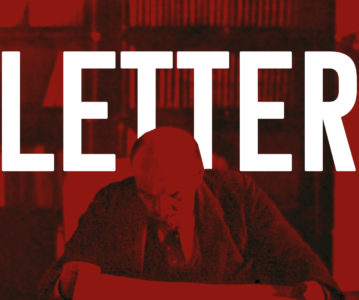I listened to your podcast titled “Dialectical Materialism, Marxist Realism and Quantum Mechanics” and would like to clarify some confusion about Bohmian mechanics. The Bohmian or ontological interpretation of non-relativistic quantum mechanics is a deterministic theory. It is ontological because it states that there are particles with well-defined position and momenta in nature, it is also realistic for this reason. We can see this by considering the theory, starting with the position-representation of wavefunction in polar form
(1)
Where is the amplitude of the wavefunction,
, and
is its phase,
. We insert this wavefunction in polar form into the Schrödinger equation
(2)
After some algebraic manipulations, we separate into real and imaginary parts to get the following set of coupled differential equations
(3)
(4)
So, we see that Equation (4) is the classical Hamilton-Jacobi equation with an additional term, , where
. The classical Hamilton-Jacobi equation is solved to obtain the velocity field on configuration space, given by
, for the propagation of classical trajectories. Similarly, we can associate the quantum Hamilton-Jacobi equation with this velocity field for the propagation of quantum trajectories. The additional term, the quantum potential, introduces all the quantum effects into the dynamics of these particles.
So, the Bohmian interpretation of quantum mechanics is completely defined by Equations (3)-(4) and the velocity field . There are no measurement axioms and the theory is completely deterministic. It has the ontology of classical mechanics. The association with classical mechanics can be made more clear by using the material derivative
(5)
And taking the gradient of Equation (4) to get
(6)
Which is a Newtonian-like equation for the quantum and classical forces acting on a particle. We see that the wavefunction, , in this interpretation plays the role of a physically real field that guides the particles. The fact that
is defined on configuration space introduces the famous nonlocality and wholeness into the theory through the quantum potential.
We can see some plots to help visualize the theory. Here is an ensemble of 100 quantum trajectories for a one-dimensional free Gaussian wave packet with initial wave-number . The initial positions of the trajectories were randomly sampled from the
distribution. This corresponds to the hypothesis that the empirical distribution of trajectories corresponds to Born’s rule, so, Bohmian mechanics makes an axiom in the standard interpretation into a hypothesis.
Figure 1 : Quantum trajectories for a free Gaussian wave packet
Now we can compare this to the case of the classical limit . The only
-dependent term is the quantum potential,
, so this is equivalent to the case of
.
Figure 2 : Classical trajectories corresponding to the free Gaussian wave packet
The equations of motion were numerically solved using the Quantum Trajectory Method of Robert Wyatt. We see that the quantum potential causes the trajectories to spread through their evolution. So, I hope you have learned about Bohmian mechanics through this letter.
Kind regards,
P




